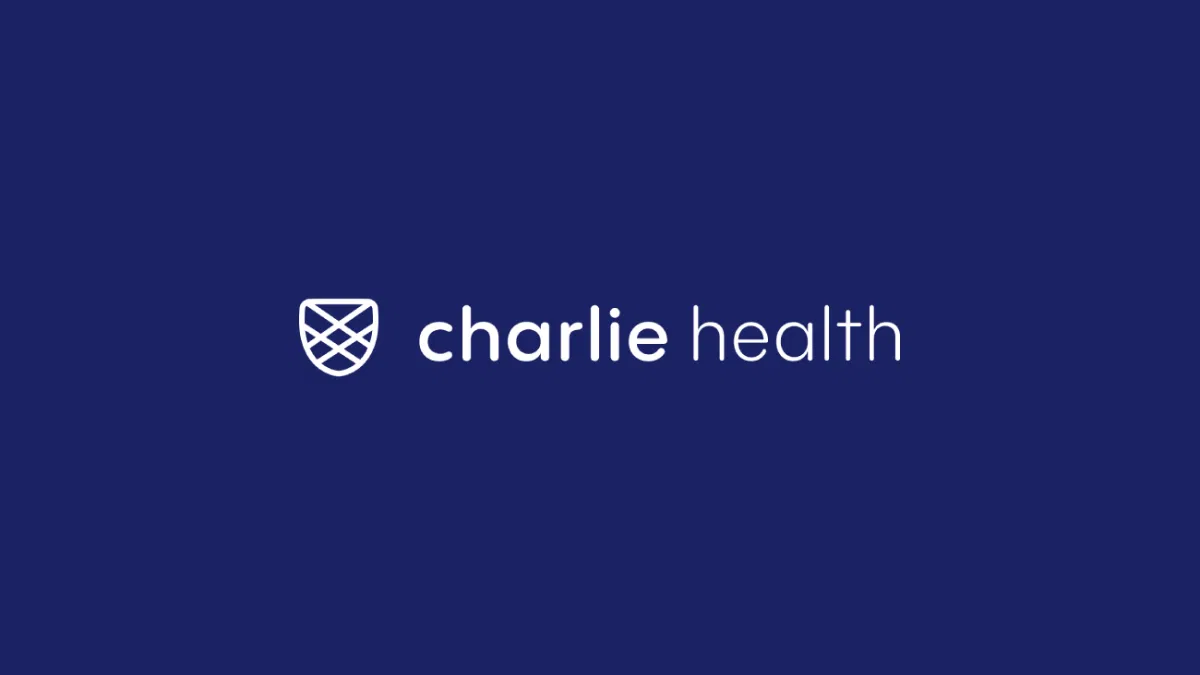
Table of Contents
Therapy Documentation Explained, Plus Therapy Notes Example Templates

Written By: Ashley Laderer

Clinically Reviewed By: Cecilia Masikini
September 5, 2025
8 min.
In this guide, we share therapy note examples, including SOAP and BIRP, along with general information about therapy documentation.
Learn more about our Clinical Review Process
Table of Contents
Therapists don’t just listen and respond during sessions — they’re also responsible for administrative work, including keeping detailed written records of what happens in session, how a client is progressing, next steps for treatment, and more. These records, known as therapy notes, aren’t just paperwork. They’re vital tools for ensuring consistent, high-quality care. In many cases, they’re also necessary for insurance coverage.
Whether you’re a new therapist or a more seasoned clinician looking for a refresher, here’s what you need to know about therapy notes and documentation — including therapy note examples to help you feel more confident in your note-taking.

Become a Charlie Health therapist today
Competitive benefits, flexible scheduling, and fully remote work.
What are therapy notes?
“Therapy notes” is a broad term that describes various types of therapy documentation, including official progress notes, psychotherapy notes, intake assessments, and discharge summaries. Together, all of these records help track a client’s journey in therapy, providing a structured way to document their care. The two main types of therapy notes we’ll be discussing are progress notes and psychotherapy notes (sometimes referred to as process notes).
What are progress notes?
Therapy progress notes are straightforward, objective clinical notes that a mental health clinician takes after each therapy session to document a client’s symptoms, treatment interventions, and progress toward treatment goals.
“It is imperative when we have therapy sessions with clients that we have initial therapy notes that talk about the client’s needs, symptoms, diagnoses, and goals, which were developed on the treatment plan,” says Alysson Thewes, LCSW, a Charlie Health Primary Therapist. “As sessions go on, progress is covered in the notes, as well as various interventions used within the sessions.”
Thewes says that accurate documentation is key to effective care. It ensures that clients’ concerns are treated appropriately and that therapists have a record to reference, she says. This documentation also helps ensure continuity of care if a client sees multiple providers (such as a psychiatrist in addition to a therapist) or transfers to a new clinician. A client will need to sign off on the release of these records to other healthcare professionals.
Thewes says key parts of a therapy progress note include:
- Client information
- Date and length of session
- Presenting issues and diagnosis
- Mental status exam
- Interventions utilized in the session
- Assessment of the session and how it went
- Next steps
Additionally, therapy notes are crucial for insurance coverage. If a client is using insurance to help pay for the session, a therapist must submit documentation for each session to the insurance carrier.
“These notes are important for insurance companies to have to review so they can ensure effective care is being provided and the session meets the requirements to be billable,” Thewes says. Without compliant and thorough progress notes, reimbursement may be denied, which leaves the client responsible for the full cost of care.
Furthermore, the progress note provides a record of the session that can help protect the therapist from liability, says Kathleen Douglass, LCPC, MA, a Charlie Health Primary Therapist. If questions ever arise about treatment decisions, accurate, detailed progress notes demonstrate that a therapist provided appropriate, evidence-based care.
“Give yourself credit for the things that you completed in the session,” Douglass says. “If you developed a safety plan, document it. If you need to use a particular assessment, indicate that it was completed.”

What are psychotherapy notes?
Psychotherapy notes (or process notes) are detailed notes that a therapist keeps for their own personal records to aid in a client’s treatment. They are not shared with insurance companies.
“Personal therapy notes are like a journal for the therapist to write down thoughts and feelings they may be having, observations about the client, things for them to discuss in supervision, and ideas to try with the client,” Douglass says. “Personal notes are not part of the medical record, and they are intentionally separated from the medical chart.”
These notes can help you remember specific details or thoughts to bring up in subsequent sessions. They don’t have to be formatted in a specific way, since they will not be submitted anywhere. They are solely to help you remember important details and assist you in helping the client to the best of your ability.
Furthermore, these session notes are also protected under HIPAA (Health Insurance Portability and Accountability Act) with additional privacy protections, meaning clients cannot access them, says Douglass. Ultimately, you, as the client’s therapist, are the only one entitled to view these notes.
Therapy notes example templates
When you’re getting started, it’s helpful to see examples of compliant progress notes that you can model after to ensure your documentation is thorough and consistent.
SOAP therapy notes
BIRP therapy notes
Other kinds of therapy notes
SOAP notes (Subjective, Objective, Assessment, Plan) give therapists a structured way to capture client experiences, clinical observations, professional insights, and treatment plans.
BIRP notes (Behavior, Intervention, Response, Plan) are often used by behavioral health clinicians to streamline documentation and track client progress session by session.
Therapists may use other frameworks, but all aim to clearly document client symptoms, interventions, and progress.
SOAP therapy notes example
SOAP notes (subjective, objective, assessment, plan) are used by many types of healthcare professionals.
For a therapist, SOAP notes offer a clear structure for recording client statements, clinical observations, professional interpretation, and next steps. Here is an example SOAP note from Thewes (about a theoretical client).
S-Subjective: Client stated, “I wake up every day wondering why I am here. Nothing feels worth it.” Client described persistent low mood, fatigue, and difficulty finding enjoyment or purpose in daily life or activities. Client denied suicidal ideation or intent. Client did endorse passive thoughts like, “If I didn’t wake up, that would be fine.” Client reported emotional numbness. Client reported feeling disconnected from others.
O-Objective: Client appeared tired and disheveled during session. Client’s affect was flat. Tone was normal. Eye contact avoidant. Speech seemed slow. No active distress note. Client was AOx4.
A-Assessment: Client continues to experience symptoms consistent with major depressive disorder. Passive thoughts of death are present. No plan or intent. Client remains engaged in treatment. Lack of meaning in life may be larger issue contributing to depressive symptoms. The therapist provided psychoeducation on logotherapy concepts to explore meaning and values. CBT techniques were also used to review and challenge the cognitive distortions that client is experiencing.
P-Plan: Client was asked to complete assignment before next session: journal prompt “What has given me meaning in my life in the past?” and bring answers into the next session. Client encouraged to engage in behavioral activation 1x per day of their choosing, such as walking their dog or meditating with a guided meditation app, and recording their progress in the Finch self-care app. Next therapy session scheduled for 10/1/25.
BIRP therapy notes example
BIRP notes (behavior, intervention, response, plan) are specifically used by behavioral and mental health clinicians to document sessions in a streamlined format.
Here is an example BIRP note from Douglass (again, about a theoretical client).
B-Behavior: Client presented as jittery and nervous and reported that they were feeling anxious about an upcoming baseball game they were playing in. He rates his anxiety as a 4 out of 5 when questioned.
I-Intervention: Clinicians utilized mindfulness practices and box breathing techniques to help client to feel calmer in the session. These skills are assisting the client in addressing their goal of feeling less anxious when having to perform in a game with their peers.
R-Response: Client was at first resistant to attempting the mindfulness exercises because he stated that he felt silly, but then fully engaged in the practice and reported that he felt better and less anxious by the end of the session. Therapist noted less sweating, deeper breathing, and no jitteriness in the client after this exercise which indicated that client’s anxiety improved. He now rates his anxiety as a 2 out of 5, improved from a 4 out of 5 at the start of the session.
P-Plan: Client will monitor anxiety levels each day and rate them on a scale of 1-5. Client will practice box breathing technique when he feels as if he is having a difficult time breathing or experiences a rapid heartbeat and sweating to help him calm down, and will note the effectiveness. No adjustments to the treatment plan are needed at this time.
Other types of therapy note formats
SOAP notes and BIRP notes are two of the most common therapy note formats that therapists use. However, a couple of other format options include:
- DAP notes: Data, Assessment, Plan
- GIRP notes: Goal, Intervention, Response, Plan
- PAIP notes: Problem, Assessment, Intervention, Plan
Regardless of format, the goal is to clearly and accurately capture what happened in the session. You want to objectively document the client’s symptoms and progress so you can properly guide ongoing treatment.
Legal and ethical considerations for therapy notes
When writing any type of therapy documentation, your clients’ confidentiality is of utmost importance. Whether you are writing a progress note to submit to insurance or a psychotherapy process note for your personal records, you must ensure HIPAA compliance. If you are using an electronic health record platform, it must be HIPAA-compliant. If you have physical notes, they should be stored securely.
With the rise of AI, new services have been created that offer AI tools to help you write compliant therapy notes. However, it’s crucial to ensure the AI tool is HIPAA-compliant. Remember, general AI tools, like ChatGPT, Claude, and Perplexity, are not HIPAA-compliant.
Using a non-compliant tool carries the risk of exposing confidential client data and violating privacy laws, which could jeopardize your career and your clients’ privacy. Always verify that any digital service or AI tool you use meets HIPAA security requirements to ensure both privacy and compliance with the law.

Join Charlie Health’s Clinical Team
Are you a mental health professional who’s passionate about making a difference and motivated by a desire to learn and grow? Join our Clinical team to deliver life-saving therapy, collaborate with other providers, and advance your career as a clinician in a mission-driven environment. Through our virtual Intensive Outpatient Program (IOP), we connect clients with the support they need for serious mental health conditions, no matter where they are in the country.
We have nationwide openings for clinicians across the spectrum of licensure. We offer:
- Fully remote work
- Flexible scheduling
- Part-time options
- Competitive compensation packages
- Annual wellness stipend
- And more
Together, we can provide the country with life-saving mental healthcare to address the mental health crisis. View open positions.




